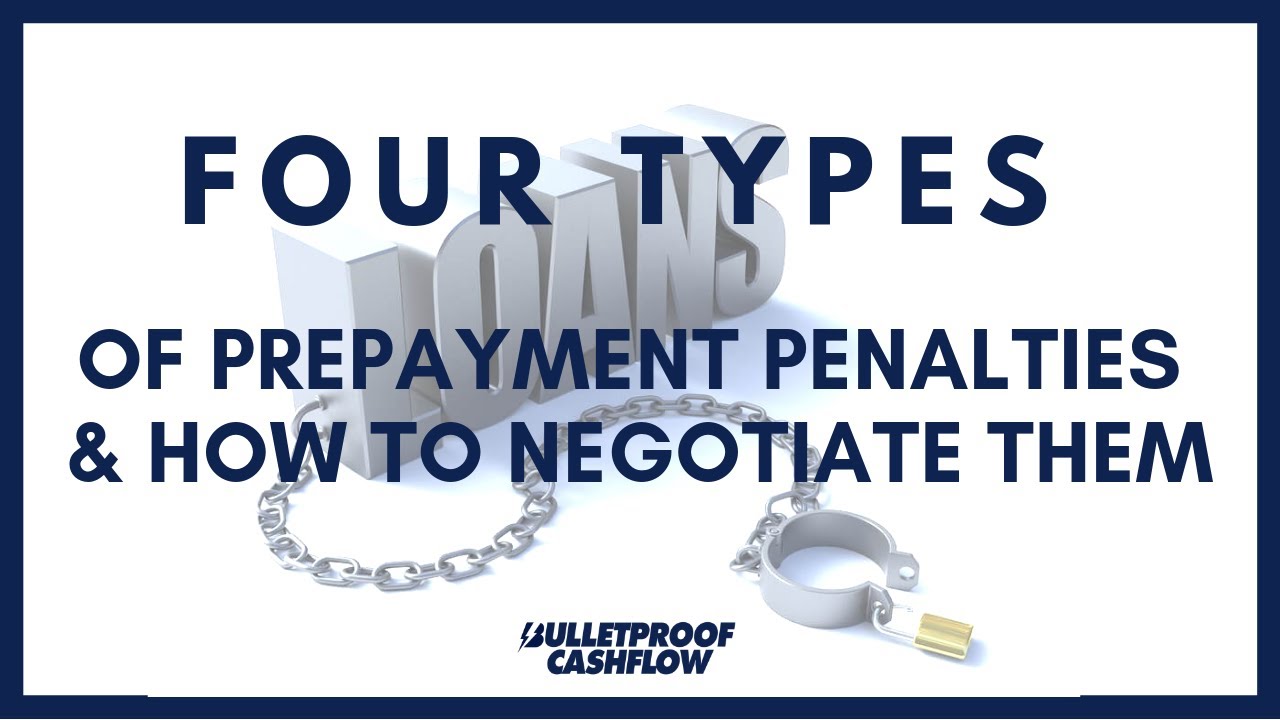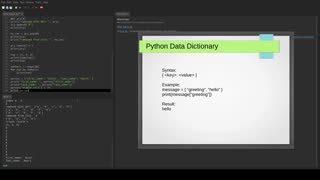Premium Only Content

FOUR TYPES of Prepayment Penalties & How to Negotiate Them
When you are working with a lender or broker on a commercial loan, one item you will want to pay close attention to are prepayment penalties. Overlooking this would be an expensive mistake if you want to shorten your refinance period or make a significant reduction to your loan balance.
For those that aren’t familiar, prepayment penalties aren't seen in residential mortgages. These prepayment penalties are regularly seen in the loans that many of you out there are making: commercial loans - loans for properties with 5 or more units.
Before we go into some of the fee and penalties, let’s go into the “why”. The primary reason lenders charge a penalty is to recoup the cost of the loan if there is a change to the payoff of the term. You will notice that banks won’t charge you a higher interest rate or points as a hard money lender would. The penalty is in place so they can get that money back if you terminate the loan earlier than expected, whether through a refinance or just paying it off for the outstanding principal amount.
A lender wants to keep a performing loan on their books. When the loan is paid off early, it introduces uncertainty to their forecasts. They put these fees in place to keep that loan in place.
There are four common prepayment penalty structures for commercial real estate loans:
1) Yield Maintenance
In this penalty structure the lender will charge you the interest as if you had made the payments for the entire period to maturity. They will calculate the net present value of the interest and hit you up for that amount at closing. This one is fairly common.
2) Defeasance
This is primarily used by insurance companies; Basically, instead of paying cash to the lender, this option allows you to exchange the note with another cash-flowing asset. If you are doing this, the new collateral is usually much less risky than the original commercial real estate asset. There is a much longer explanation, but doing all this is not easy or cheap. This is primarily seen if the loan has been bundled with other loans and sold as debt security as a Commercial Mortgage-Backed Security (CMBS). Chances are that you will not see this on your loan docs.
3) Step-down
This one is quite common and simple; In this case, the lender will put a prepayment fee schedule in place that will decline over time. For example, in a 3-2-1 scenario, you would pay 3% of the loan amount prepaid in Year 1, 2% in Year 2 and 1% in Year 3. If you are doing a refinance with the lender that has this provision, they will sometimes waive the penalty if you keep the loan with them. Be sure to ask this upfront.
4) Lockout
This one is rare to see; It doesn’t allow for any prepayment at all during a specified period. Let’s say you have a 10-Year loan without contractual ability to prepay, or a lockout, in the first 6 years of the loan. There will be no option to refinance or even sell the property during that time. As you can imagine, this will not work for us in the world of commercial real estate. Avoid the lockout provision.
There are many lenders with good rates and no prepayment penalties. You will see this with lenders that offer a floating rate loan. Depending on where we are in the economic cycle, you may be comfortable with this. Personally, I like to fix my rate so I know what to expect out of the monthly payment and know what my net operating income will be.
There is sometimes room for negotiating the penalty. When you are presented with a term sheet, review it closely. Have your partners take a look as well and look for any prepayment penalties. If you need flexibility because of the deal you are working on - for example, a 3-Year refi and distribution to your investors - then a 5-Year step-down won’t work for you unless you are prepared to pay. Telling the lender what your plan is important. You can push for the prepayment you can commit to by swapping it for another penalty type. Perhaps you would be fine with a 3-Year Yield Maintenance and sell at the beginning of Year 4. Or, they may even eliminate the entire prepayment altogether by bumping the rate up a little. This may actually be a better choice for you depending on your plan with the property. Lenders like to mitigate risk whenever they can. By offering a prepayment mechanism that suits your needs, they are more likely to accept and help you get this deal closed.
Anyway, have you ever been hit with prepayment fees? Have you heard of the ones I spoke about today? Let me know in the comments. I’d love to hear from you.
If you liked this content, go ahead and give it a thumbs up and share it. Also, check out the Bulletproof Cashflow podcast on iTunes or Stitcher, and subscribe to our YouTube channel. We are working on getting new content out all the time to help you build your success in the world of multifamily.
Be great.
-
 3:42
3:42
DrKrupka
4 years agoHow to test for the four types of hormones
171 -
 3:05
3:05
Meteorology101
4 years agoHow To Forecast Precipitation Types
14 -
 0:14
0:14
PopoNextcarrot
4 years agoHow to negotiate with a cat
180 -
 2:09
2:09
Seloftosaurus Rex
4 years ago $0.01 earnedRoblox Types
462 -
 34:31
34:31
Bits-N-Bytes
4 years agoPython Data Types
269 -
 2:19
2:19
Meteorology101
4 years ago $0.01 earnedTypes of Thunderstorms
501 -
 3:28
3:28
An Engineer Explains Wheelchairs
4 years agoWheelchair types
123 -
 0:14
0:14
HealthyDogSolutions
4 years agoDog Allergy Types
52 -
 22:07
22:07
Healthy Hands Cooking with Crystal
4 years ago $0.01 earned2 Types of Gingerbread Cookies
98 -
 5:45
5:45
MysticKeith
4 years agoTypes of Home Structures
33